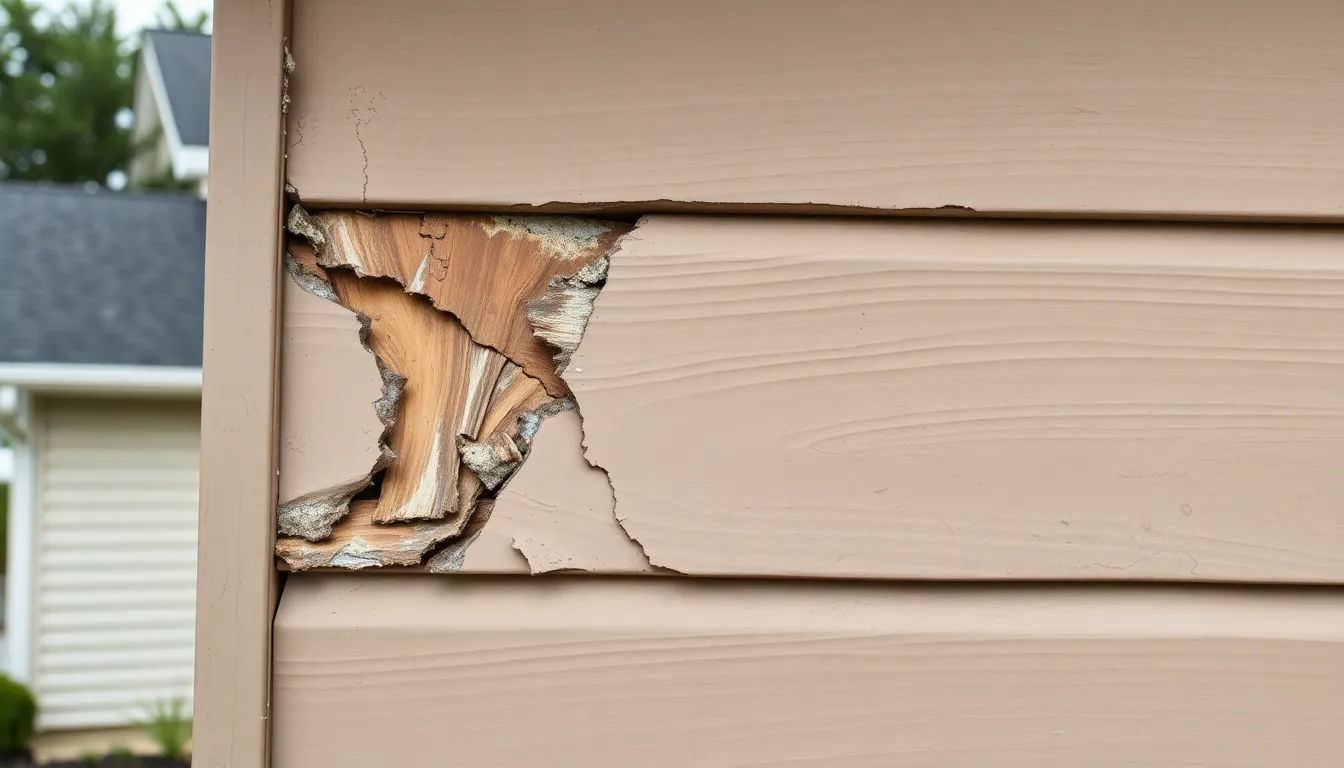Siding repair is often an overlooked aspect of home maintenance, yet it plays a crucial role in protecting a house’s structure and enhancing its curb appeal. Over time, siding can suffer from wear and tear due to weather conditions, pests, or even improper installation. Addressing these issues promptly not only preserves the integrity of the home but also saves homeowners from more costly repairs down the line.
Understanding the signs that indicate a need for siding repair can empower homeowners to take action before problems escalate. From cracked panels to peeling paint, recognizing these warning signs ensures that a home remains safe and visually appealing. In some cases, advanced solutions such as a 3d survey Sydney service can provide precise exterior measurements, helping contractors plan siding repairs with greater accuracy. With the right knowledge and approach, anyone can tackle siding issues effectively, making their home a more inviting place to live.
Table of Contents
ToggleImportance Of Siding Repair
Siding repair plays a crucial role in maintaining a home’s structural integrity and aesthetic appeal. Effective siding protects against weather conditions, pests, and moisture infiltration. Damaged or worn siding compromises this protection, leading to potential problems such as mold growth, wood rot, and insect infestations.
Addressing siding issues promptly prevents costly repairs down the line. For example, a small crack can allow water to seep behind the siding, resulting in significant damage to framing and insulation. Homeowners should inspect their siding regularly, looking for signs like cracked panels, warped boards, or peeling paint.
Beyond functionality, siding repair also enhances curb appeal. Well-maintained siding improves the overall appearance of a home, increasing its market value. Homes with updated siding attract prospective buyers, making siding repair a wise investment for those planning to sell.
Siding repair ensures structural protection, prevents costly damage, and maintains a home’s value. Recognizing and addressing siding issues promptly keeps a home safe and appealing.
Common Siding Problems

Siding can encounter various issues that compromise its functionality and appearance. Homeowners should be aware of common siding problems to address them efficiently.
Weather Damage
Weather damage ranks among the most prevalent siding problems. Severe storms, heavy rains, and harsh sunlight can cause materials to warp, crack, or fade. Vinyl siding, in particular, may become brittle under extreme temperatures. Wooden siding can swell with moisture absorption, then shrink and crack as it dries. Homeowners should inspect siding regularly for any signs of discoloration, peeling, or structural deformity to ensure timely repairs.
Insect Infestation
Insect infestation poses a significant risk to siding integrity, especially with wooden materials. Termites, carpenter ants, and woodpeckers can cause extensive damage, leading to costly repairs. Signs of such infestations include small holes, frass, and hollow-sounding panels. Prompt identification and treatment of insect problems are crucial for preserving the siding’s structural integrity and preventing further damage. Regular inspections can help homeowners catch infestations early and take appropriate action.
Siding Repair Techniques
Siding repair techniques vary based on the damage type and the homeowner’s skill level. Understanding both DIY repairs and professional services helps homeowners make informed decisions.
DIY Repairs
DIY repairs can address minor siding damage effectively. Homeowners can undertake these tasks if they notice small cracks, loose panels, or fading paint.
- Cleaning: Use a power washer or garden hose with detergent to remove dirt and mildew.
- Patch Cracks: For small cracks in vinyl or wood siding, apply a flexible sealant or siding patch. Follow the manufacturer’s instructions for optimal adhesion.
- Repaint: A fresh coat of paint on faded siding rejuvenates its appearance. Choose high-quality exterior paint suitable for the siding material.
- Replace Panels: For loose or damaged panels, owners can remove the affected area and replace it with new siding. Ensure proper alignment with the surrounding panels.
Proper safety measures, such as wearing gloves and goggles, should accompany all DIY efforts.
Professional Services
Professional services provide comprehensive siding repair solutions for significant damage. Homeowners benefit from expertise and specialized tools when facing extensive issues.
- Inspection: Professionals conduct thorough assessments to identify hidden damage beyond visible indicators.
- Material Expertise: Experts recommend appropriate materials based on the home’s architecture and local climate, ensuring durability and aesthetics.
- Comprehensive Repairs: Professionals address various issues, including insect infestations, moisture damage, and structural repairs that require advanced techniques.
- Warranty Options: Many contractors offer warranties on their workmanship, providing additional security for homeowners concerned about future repairs.
Choosing professionals enables homeowners to avoid potential pitfalls associated with improper repairs.
Materials Used In Siding Repair
Siding repair often involves various materials, each selected based on durability, aesthetics, and specific repair needs. Understanding these materials aids homeowners in making informed decisions during repairs.
Wood
Wood siding remains a popular choice due to its natural appearance and versatility. It requires regular maintenance, such as painting or staining, to prevent moisture damage and insect infestations. Popular types of wood used in siding include cedar, which offers natural resistance to decay, and pine, known for its affordability. In repair situations, wood planks may need replacement or patching. Treatments like sealants enhance longevity, preserving the wood’s integrity over time.
Vinyl
Vinyl siding offers a low-maintenance alternative with excellent weather resistance. Available in numerous colors and styles, it allows for aesthetic customization. Vinyl siding resists fading, cracking, and peeling, making it suitable for diverse climates. During repairs, damaged sections can often be replaced without affecting adjacent panels. Homeowners should seek vinyl materials that meet industry standards for durability, typically measured by gauges, with thicker panels providing added protection. Proper installation and maintenance ensure the long-term performance of vinyl siding.
Cost Factors For Siding Repair
Several cost factors influence siding repair, impacting final expenses for homeowners. Understanding these variables assists in budgeting and planning.
1. Type of Siding Material
The type of siding material affects repair costs significantly.
- Vinyl siding: Generally low-cost and easy to repair, vinyl tends to range from $2 to $7 per square foot for repairs.
- Wood siding: Requires more maintenance, with repair costs from $5 to $15 per square foot due to labor and material needs.
- Fiber cement siding: Durable but costly, repair expenses may vary between $10 and $20 per square foot.
2. Extent of Damage
Extent of damage affects the total repair cost.
- Minor repairs: Small cracks or localized damage could cost $100 to $300, including materials and labor.
- Moderate repairs: Repairs involving panel replacement or extensive patching typically range from $300 to $1,000.
- Severe repairs: Major structural damage or complete panel replacement could surpass $1,000, depending on the area and complexity of work.
3. Labor Costs
Labor costs contribute to overall repair expenses.
- Local labor rates: Rates can vary widely by region, with urban areas often costing more than rural locations.
- Contractor expertise: Hiring specialists may increase costs, yet their experience can ensure high-quality work.
4. Additional Services
Additional services impact the final cost.
- Inspection fees: A thorough inspection might incur fees ranging from $50 to $150, ensuring damage assessment before repairs.
- Trim and paint: If trim replacement or painting is necessary, expect additional costs from $150 to $1,000, based on project size.
5. Seasonal Factors
Seasonal timing can influence costs.
- Peak seasons: Summer and early fall see higher demand, potentially raising repair prices due to contractor availability.
- Off-peak times: Scheduling repairs during winter or late fall may yield lower costs, as contractors often offer discounts.
| Cost Factor | Estimated Costs |
|---|---|
| Vinyl siding repairs | $2 – $7 per square foot |
| Wood siding repairs | $5 – $15 per square foot |
| Fiber cement repairs | $10 – $20 per square foot |
| Minor damage repairs | $100 – $300 |
| Moderate damage repairs | $300 – $1,000 |
| Severe damage repairs | Over $1,000 |
| Inspection fees | $50 – $150 |
| Trim and paint | $150 – $1,000 |
Siding repair is a vital aspect of home maintenance that shouldn’t be overlooked. By addressing issues early homeowners can safeguard their property against severe damage and costly repairs. Regular inspections and prompt action not only enhance the home’s curb appeal but also contribute to its long-term value.
Choosing the right materials and repair techniques tailored to specific needs ensures durability and effectiveness. Whether opting for DIY solutions or professional services understanding the costs involved helps homeowners make informed decisions. Ultimately maintaining siding is an investment in a safe and attractive living environment.



